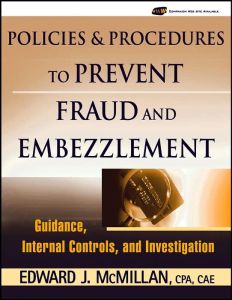Join getAbstract to access the summary!

Join getAbstract to access the summary!
Edward J. McMillan
Policies & Procedures to Prevent Fraud and Embezzlement
Guidance, Internal Controls, and Investigation
Wiley, 2006
What's inside?
Embezzlers often have familiar faces. They can be co-workers. They know your system. So how do you prevent them from attacking?
Recommendation
This basic, informative book exactly addresses its title topic. Edward McMillan delivers straightforward advice for companies of all sizes. He also offers individuals advice on avoiding identity theft. McMillan covers everything from case histories to the details of hiring agreements, and how to fire an employee who commits fraud. Each chapter contains recommendations, sample documents, key points and checklists. The book also provides 119 pages of useful sample documents relating to internal controls to help you prevent this widespread, costly crime. getAbstract recommends McMillan’s practical guide to anyone concerned about corporate – and personal – security.
Summary
About the Author
Edward J. McMillan, CPA, CAE, is an experienced fraud examiner. He teaches fraud-prevention courses to professional organizations and regularly speaks on this topic.


















Comment on this summary